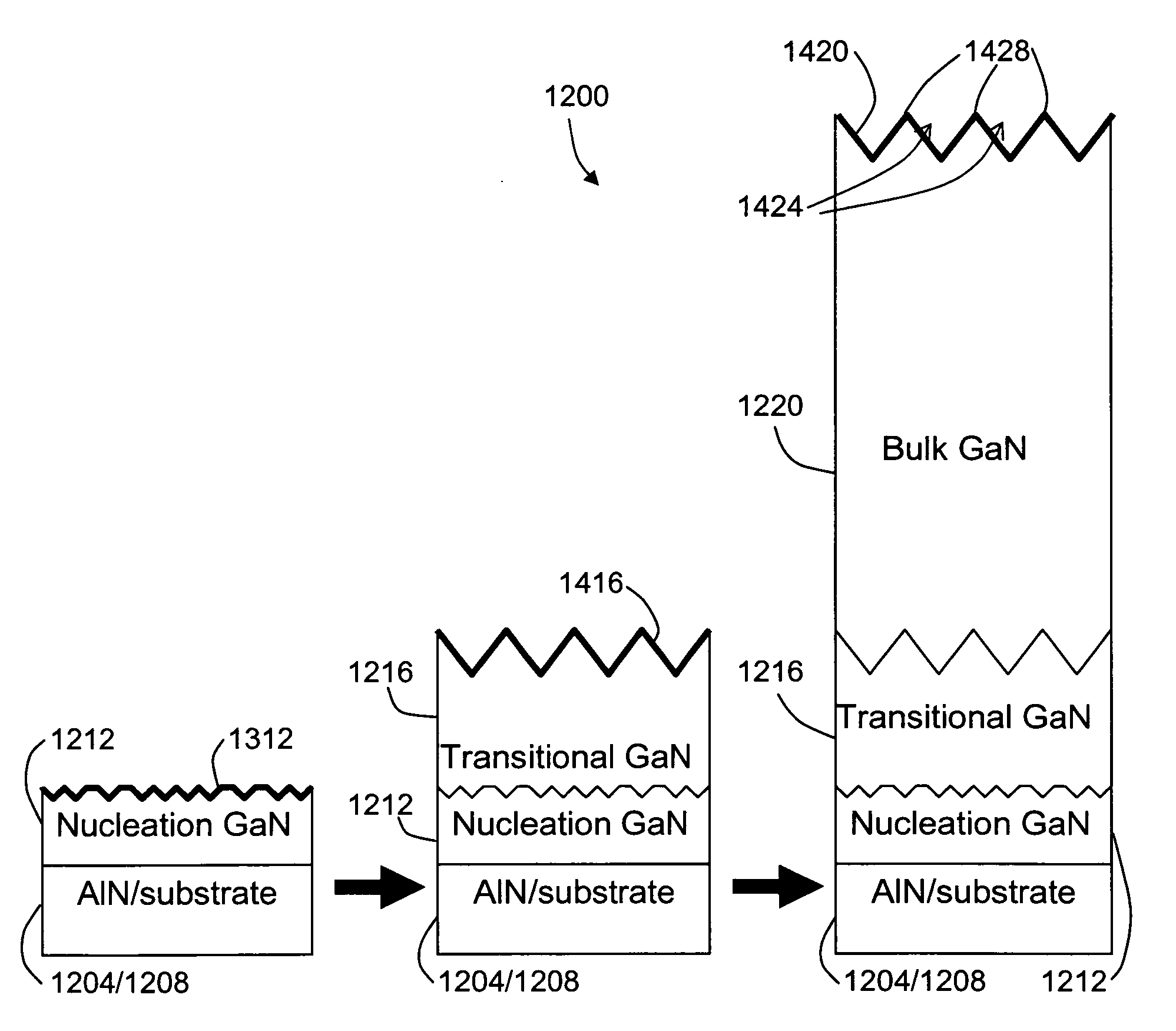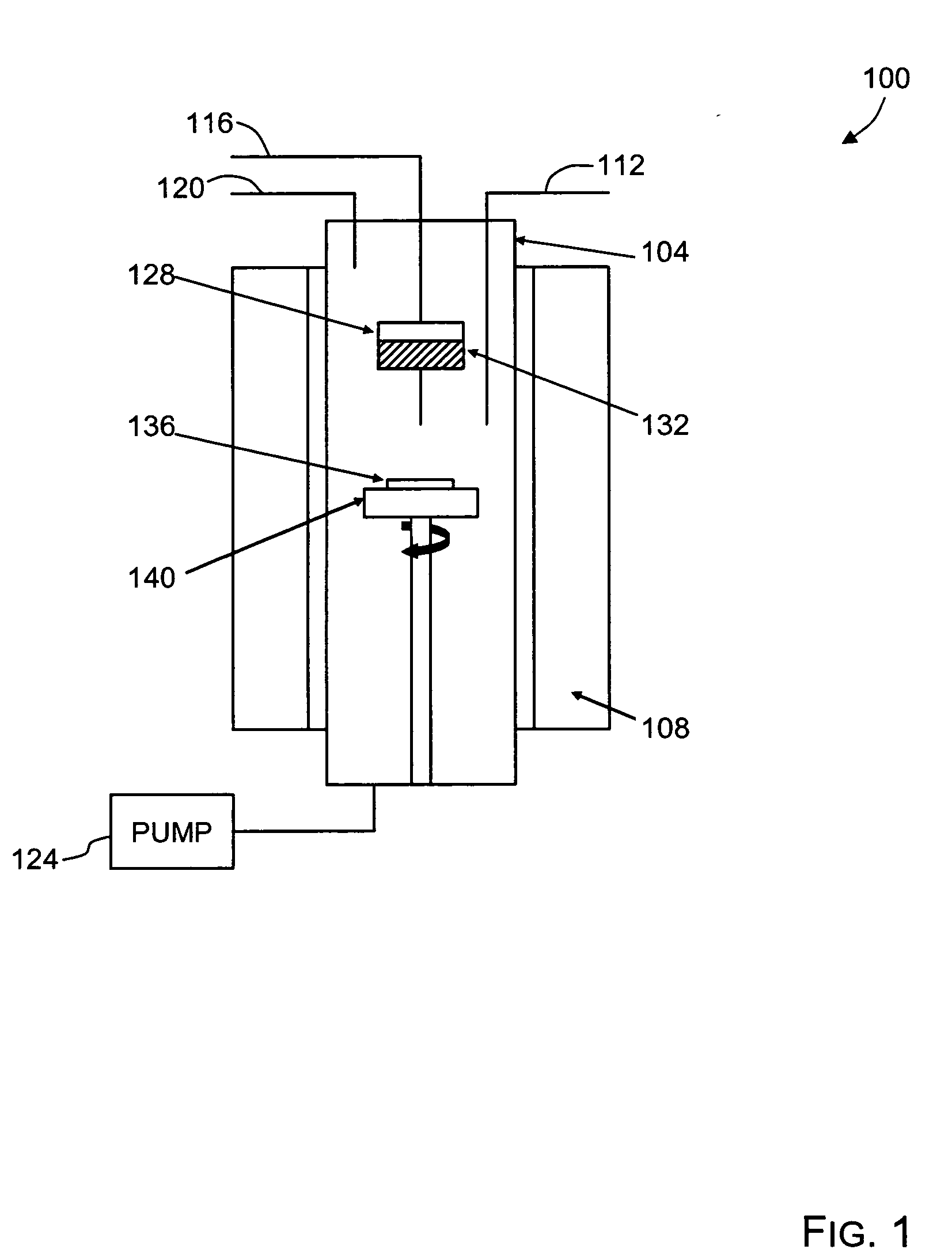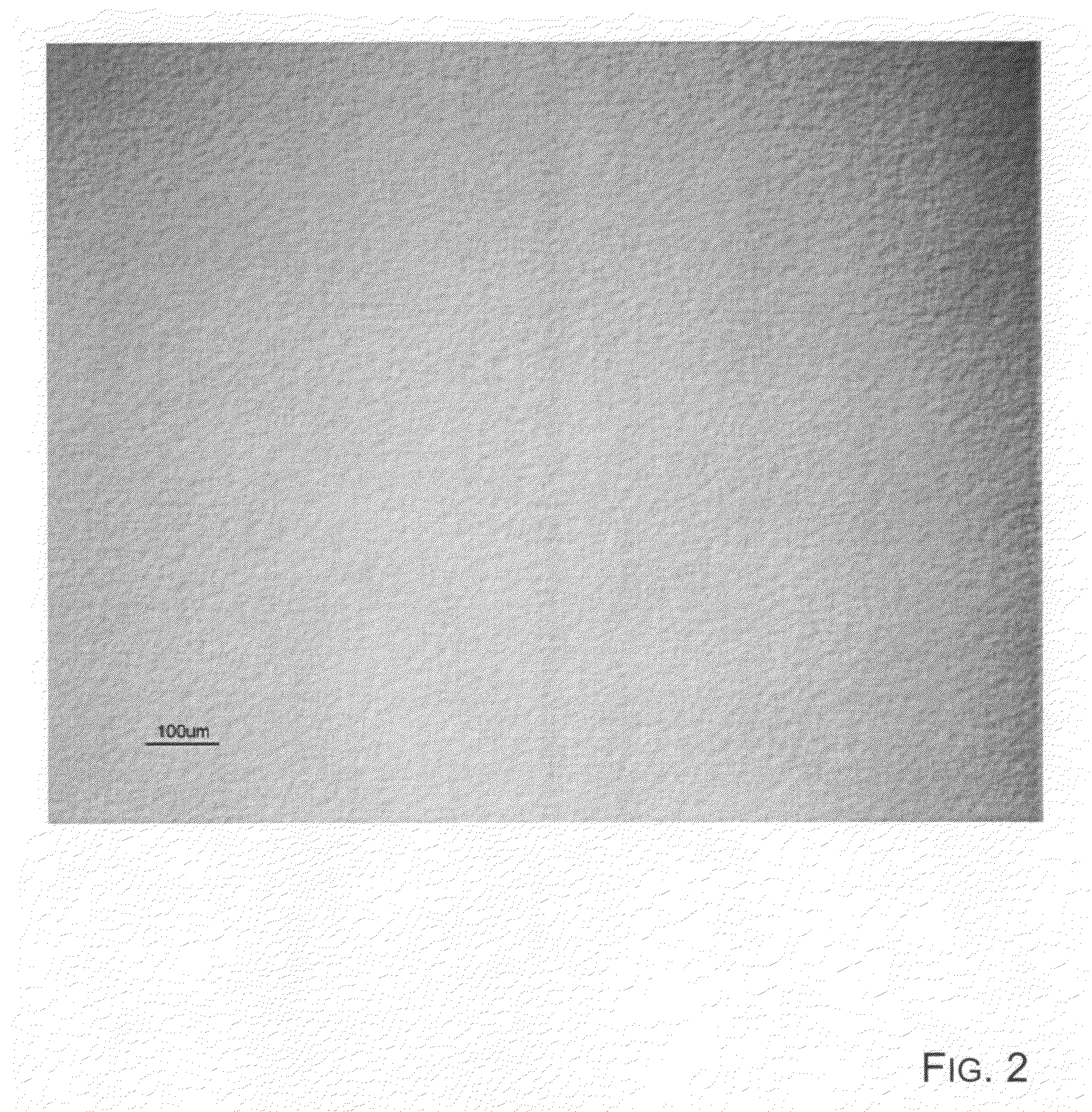Group III Nitride Articles and Methods for Making Same
a nitride and article technology, applied in the direction of crystal growth process, polycrystalline material growth, chemically reactive gas, etc., can solve the problems of gallium nitride single crystals that cannot be grown with conventional crystal growth, high crystal defects of gan films grown on both sapphire and sic substrates, and detrimental effects of dislocation density on device performance and lifetime, etc., to achieve the effect of promoting the formation of pits
- Summary
- Abstract
- Description
- Claims
- Application Information
AI Technical Summary
Benefits of technology
Problems solved by technology
Method used
Image
Examples
example 1
Single Crystal GaN Film Grown on AlN-Coated Sapphire
[0134]In this example, we used a 2″ sapphire substrate. A thin layer of AlN film was sputter-grown on the sapphire substrate using the method disclosed in U.S. Pat. No. 6,784,085. The thickness of the AlN layer was about 0.5-1.5 microns. X-ray rocking curve measurement indicated the AlN film was epitaxial single-crystalline film with (0002) rocking curve full width at half maximum (FWHM) of 50 arcsec. The AlN-coated sapphire substrate was loaded into the HVPE reactor and a GaN film was grown using the aforementioned procedure. The growth rate was about 60 microns per hour, the GaCl partial pressure was about 3 (2.97) Torr, the NH3 partial pressure was about 45 (44.6) Torr, the V:III ratio was about 15, and the growth temperature was about 950° C. as measured with a thermocouple under the platter. The growth time was 1 minute. The GaN film grown was transparent with a smooth specular surface. FIG. 2 shows an optical micrograph of th...
example 2
GaN Growth Under Low NH3 Partial Pressure Conditions
[0142]In this example, we grew a GaN film under a low NH3 partial pressure condition (low V:III ratio). An AlN-coated 2″ sapphire substrate was used. The AlN coated sapphire substrate was loaded into the HVPE reactor and a GaN film was grown using the aforementioned procedure. The growth rate was about 87.5 microns per hour, the GaCl partial pressure was about 0.73 Torr, the NH3 partial pressure was about 19.5 Torr, the V:III ratio was about 26, and the growth temperature was about 950° C. The growth time was 5 minutes. The GaN film grown was transparent with a smooth surface. However, the GaN film was microcracked. FIG. 6 shows an optical micrograph of the surface of the GaN film, showing microcracking of the film. X-ray rocking curve measurement confirmed the single crystalline nature of the GaN film, with FWHM of 300 arcsec. The observed trend of microcracked films under low NH3 partial pressure conditions was consistent over a...
example 3
GaN Growth Under Moderate NH3 Partial Pressure Conditions
[0143]In this example, we grew a GaN film under a moderate NH3 partial pressure condition (moderate V:III ratio). An AlN-coated 2″ sapphire substrate was used. The AlN coated sapphire substrate was loaded into the HVPE reactor, and a GaN film was grown using the aforementioned procedure. The growth rate was about 320 microns per hour, the GaCl partial pressure was around 1.8 Torr, the NH3 partial pressure was around 112.8 Torr, the V:III ratio was about 58, and the growth temperature was about 990° C. The growth time was 20 minutes. Under optical microscope examination, the GaN surface was covered with pits. FIG. 7 shows an optical micrograph of the surface of the GaN film. Although the GaN film surface is covered with pits, the film is still an epitaxial single-crystalline film, as confirmed by x-ray rocking curve measurement, with FWHM of 400 arcsec. The larger FWHM value of the film is due in part to curvature of the sample...
PUM
| Property | Measurement | Unit |
|---|---|---|
| thickness | aaaaa | aaaaa |
| thickness | aaaaa | aaaaa |
| thickness | aaaaa | aaaaa |
Abstract
Description
Claims
Application Information
 Login to View More
Login to View More - R&D
- Intellectual Property
- Life Sciences
- Materials
- Tech Scout
- Unparalleled Data Quality
- Higher Quality Content
- 60% Fewer Hallucinations
Browse by: Latest US Patents, China's latest patents, Technical Efficacy Thesaurus, Application Domain, Technology Topic, Popular Technical Reports.
© 2025 PatSnap. All rights reserved.Legal|Privacy policy|Modern Slavery Act Transparency Statement|Sitemap|About US| Contact US: help@patsnap.com



